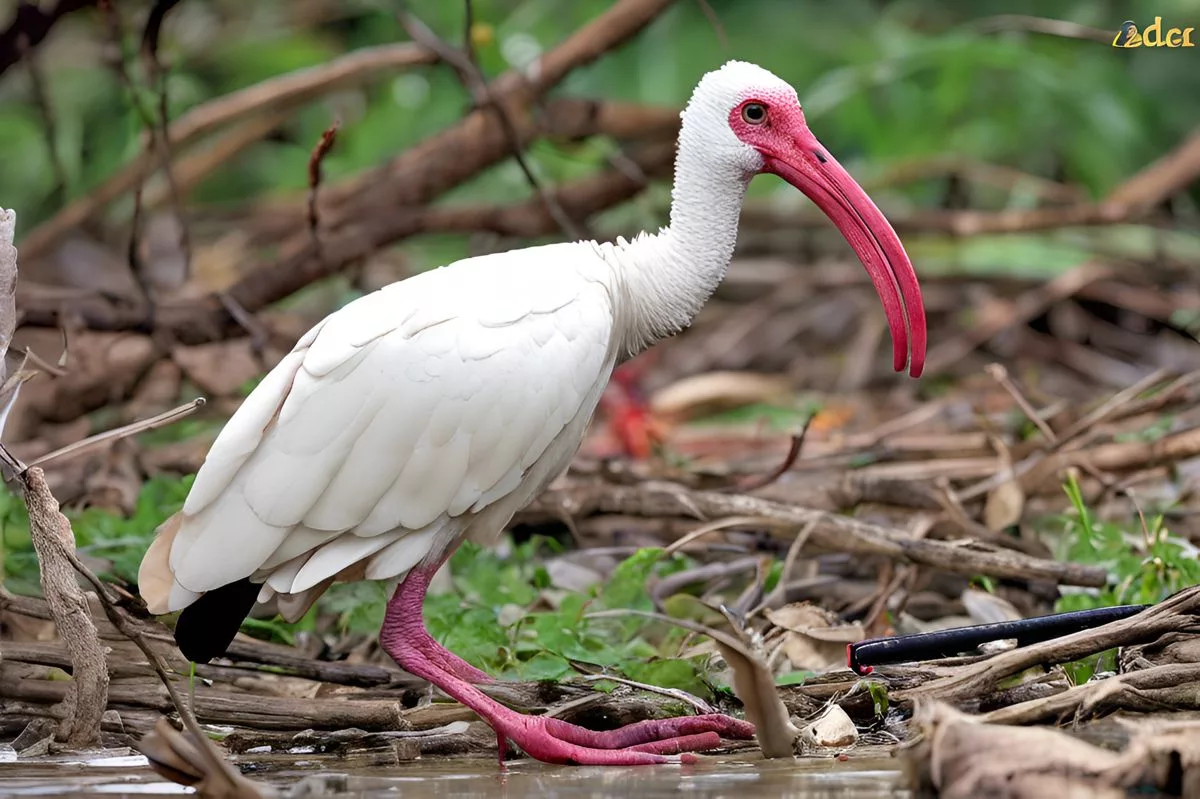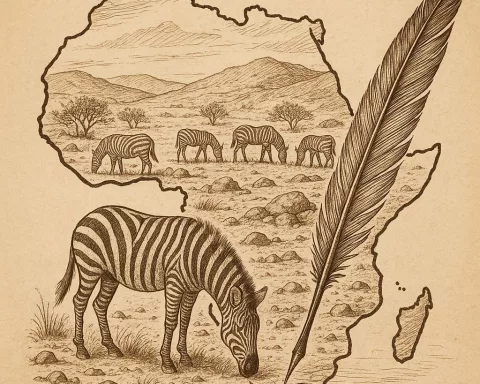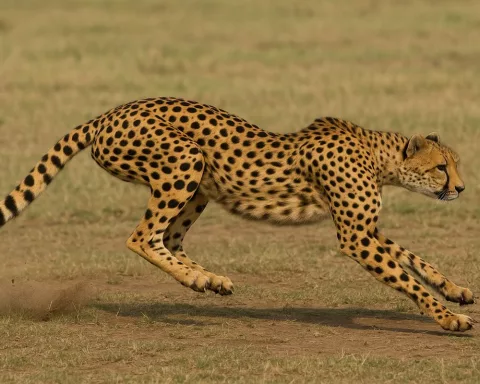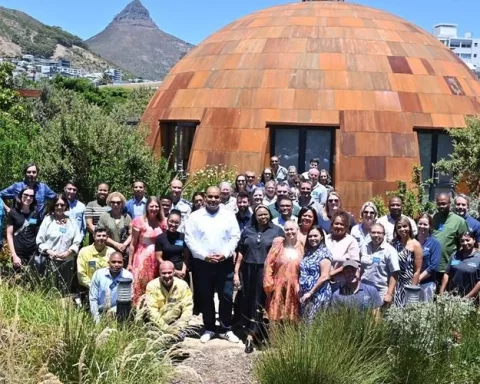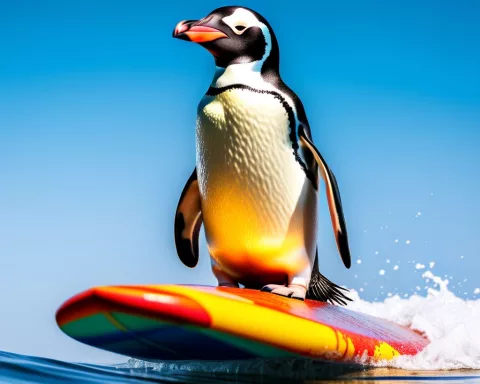The Hadeda Ibis has a unique sensory adjustment that allows it to locate its underground prey by detecting vibrations generated by them beneath the soil surface, known as remote-touch. This ability heavily depends on the moisture content of the soil, making human soil irrigation inadvertently aid the ibises’ range expansion, as it provides more moist substrates for them to sense their prey. The study sheds light on the importance of acknowledging the sensory needs of wetland birds in conservation efforts, particularly in a time marked by continuous environmental changes.
The Sensory Adaptation of the Hadeda Ibis
The Hadeda Ibis (Bostrychia hagedash) has a unique sensory adjustment that allows it to detect vibrations generated by its underground prey, such as earthworms. This ability, known as remote-touch, heavily depends on the moisture content of the soil. Human soil irrigation inadvertently aids the ibises’ range expansion, as it provides more moist substrates for them to sense their prey. The study sheds light on the significance of acknowledging the sensory needs of wetland birds in conservation efforts.
Exploring the realm of ornithology, our attention often gravitates towards the appeal of birds’ melodies, the allure of their flight, and the captivating beauty they possess. However, a research team from the University of Cape Town (UCT) has successfully redirected this focus towards another intriguing aspect— the sensory prowess of birds. Spearheaded by Dr. Carla du Toit, and aided by Professor Anusuya Chinsamy and Associate Professor Susan Cunning, the team unveiled the fascinating sensory abilities of the Hadeda Ibis (Bostrychia hagedash). This is a species that has experienced a dramatic range expansion across Southern Africa.
The notably esteemed Journal of Avian Biology published their groundbreaking research. This study emphasizes the pivotal role human soil irrigation plays, along with the ibises’ unique remote-tactile foraging skills, in aiding this habitat expansion. The rather modest Hadeda Ibis is steadily peeling back layers to reveal novel insights into avian adaptation and resilience.
The Sensory Adaptation of the Hadeda Ibis
What sets this discovery apart is the unique sensory adjustment these ibises use to locate their underground prey, such as earthworms. This adjustment allows them to detect vibrations generated by these invertebrates beneath the soil surface. Intriguingly, the effectiveness of this ability heavily depends on the moisture content of the soil.
The human practice of irrigation in suburban and agricultural zones has inadvertently provided more moist substrates. These conditions simplify the task for ibises to sense their prey, thereby facilitating their range expansion. The study, therefore, unveils how human activities unintentionally mold the distribution and behavior of wetland birds.
Remote-Touch: A Unique Sensory Adaptation
The team delved into the details of this notable ability, known as remote-touch, at the World of Birds sanctuary in Hout Bay. This ability equips the ibises to sense vibrations from prey items in the substrate, functioning as a fusion of touch, hearing, and echolocation. The research observed that the ibises forage with increased success in moist soils, where vibrations are transmitted more efficiently.
Dr. du Toit commented on the quick adaptation of Hadeda Ibises to alterations in soil moisture levels, remarking on their resilience and adaptability. Nonetheless, the implications of this study extend beyond understanding the behavior of a single bird species. It also sheds light on the significance of acknowledging the sensory needs of wetland birds in conservation efforts, particularly in a time marked by continuous environmental changes.
The Importance of Sensory Ecology in Conservation
The study further emphasizes the need to investigate the sensory ecology of animals in habitat management and conservation initiatives. By grasping the sensory mechanisms that underpin foraging behavior, we can better understand and mitigate the impacts of human-induced environmental changes on wildlife.
An analysis of the study’s data highlighted a robust correlation between the ibises’ range expansion and human-induced soil irrigation. This finding underscores how human activities not only aid the birds’ foraging but also contribute to their dispersion in suburban and agricultural regions. The distinctive loud calls of the ibises have now become a prevalent feature in and around human settlements, marking a significant shift from their traditional distribution in eastern South Africa.
The Larger Picture
The investigation of the Hadeda Ibis forms part of a wider research project focusing on the tactile sensory systems of modern birds globally. The aim is to comprehend the function and evolution of these senses and their associated organs. Led by a team of women, this research continues at both the University of Cambridge (where Dr. du Toit is now based) and UCT, with further collaborations across institutions.
As humans persist in altering landscapes, the study underlines the importance of considering the ecological implications and the potential cascading effects on wildlife. The humble Hadeda Ibis and the insights it offers into avian sensory adaptations suggest that the world has much to glean from this species. It paints a picture of the species’ resilience, adaptability, and the complex interplay between human activities and nature—a testament to the intricate relationship between humanity and the environment.
What is the unique sensory adjustment of the Hadeda Ibis?
The Hadeda Ibis has a unique sensory adjustment that allows it to detect vibrations generated by its underground prey, such as earthworms. This ability, known as remote-touch, heavily depends on the moisture content of the soil.
How does human soil irrigation aid the range expansion of the Hadeda Ibis?
Human soil irrigation inadvertently aids the ibises’ range expansion, as it provides more moist substrates for them to sense their prey. The effectiveness of their remote-touch ability heavily depends on the moisture content of the soil, so the moist substrates provided by human soil irrigation make it easier for them to locate their prey.
What is the significance of acknowledging the sensory needs of wetland birds in conservation efforts?
The study sheds light on the significance of acknowledging the sensory needs of wetland birds in conservation efforts, particularly in a time marked by continuous environmental changes. By grasping the sensory mechanisms that underpin foraging behavior, we can better understand and mitigate the impacts of human-induced environmental changes on wildlife.
What is remote-touch and how does it work?
Remote-touch is the unique ability of the Hadeda Ibis to sense vibrations from prey items in the substrate, functioning as a fusion of touch, hearing, and echolocation. They detect vibrations generated by their underground prey, such as earthworms, beneath the soil surface.
How does human-induced soil irrigation contribute to the dispersion of Hadeda Ibises in suburban and agricultural regions?
An analysis of the study’s data highlighted a robust correlation between the ibises’ range expansion and human-induced soil irrigation. This finding underscores how human activities not only aid the birds’ foraging but also contribute to their dispersion in suburban and agricultural regions, where they have become a prevalent feature in and around human settlements.
What is the wider research project focusing on the tactile sensory systems of modern birds globally?
The investigation of the Hadeda Ibis forms part of a wider research project focusing on the tactile sensory systems of modern birds globally. The aim is to comprehend the function and evolution of these senses and their associated organs. The research continues at both the University of Cambridge (where Dr. du Toit is now based) and UCT, with further collaborations across institutions.

